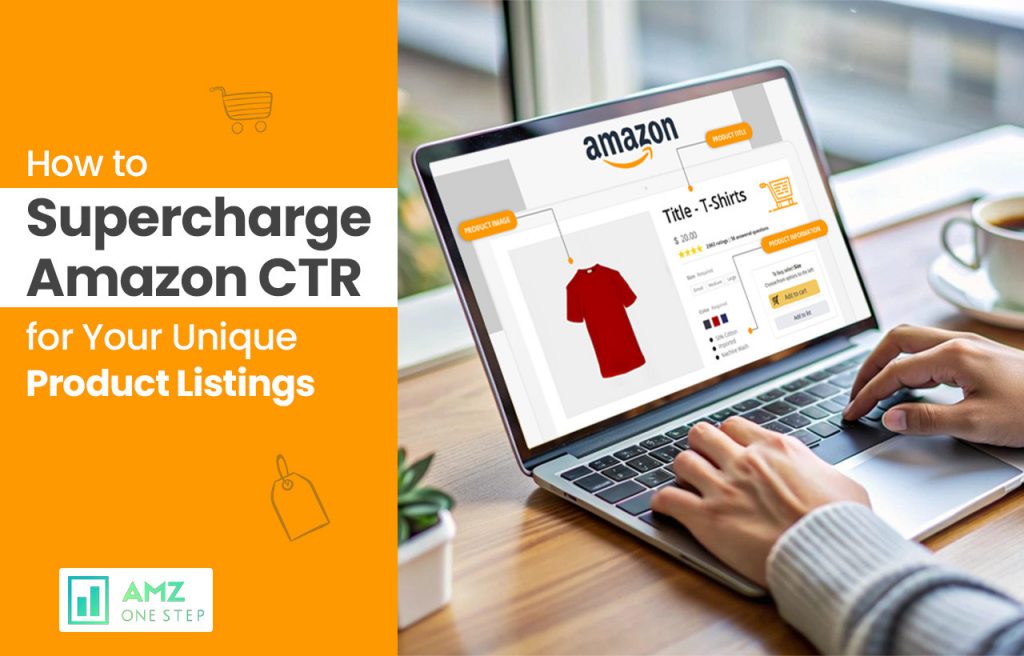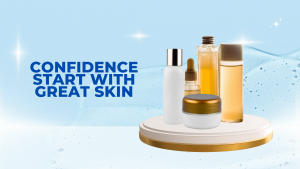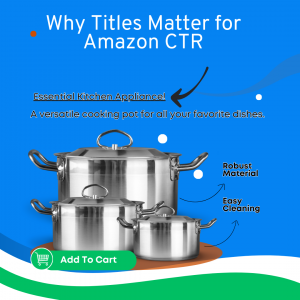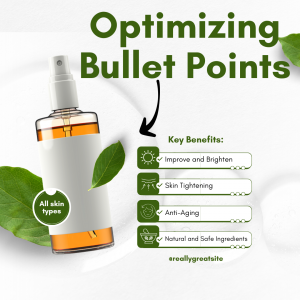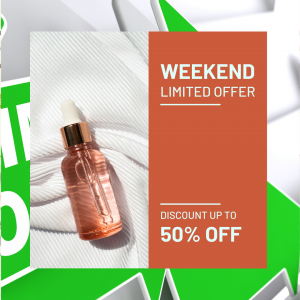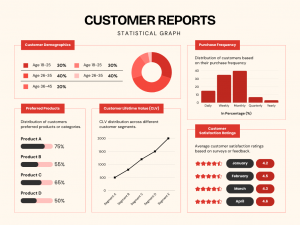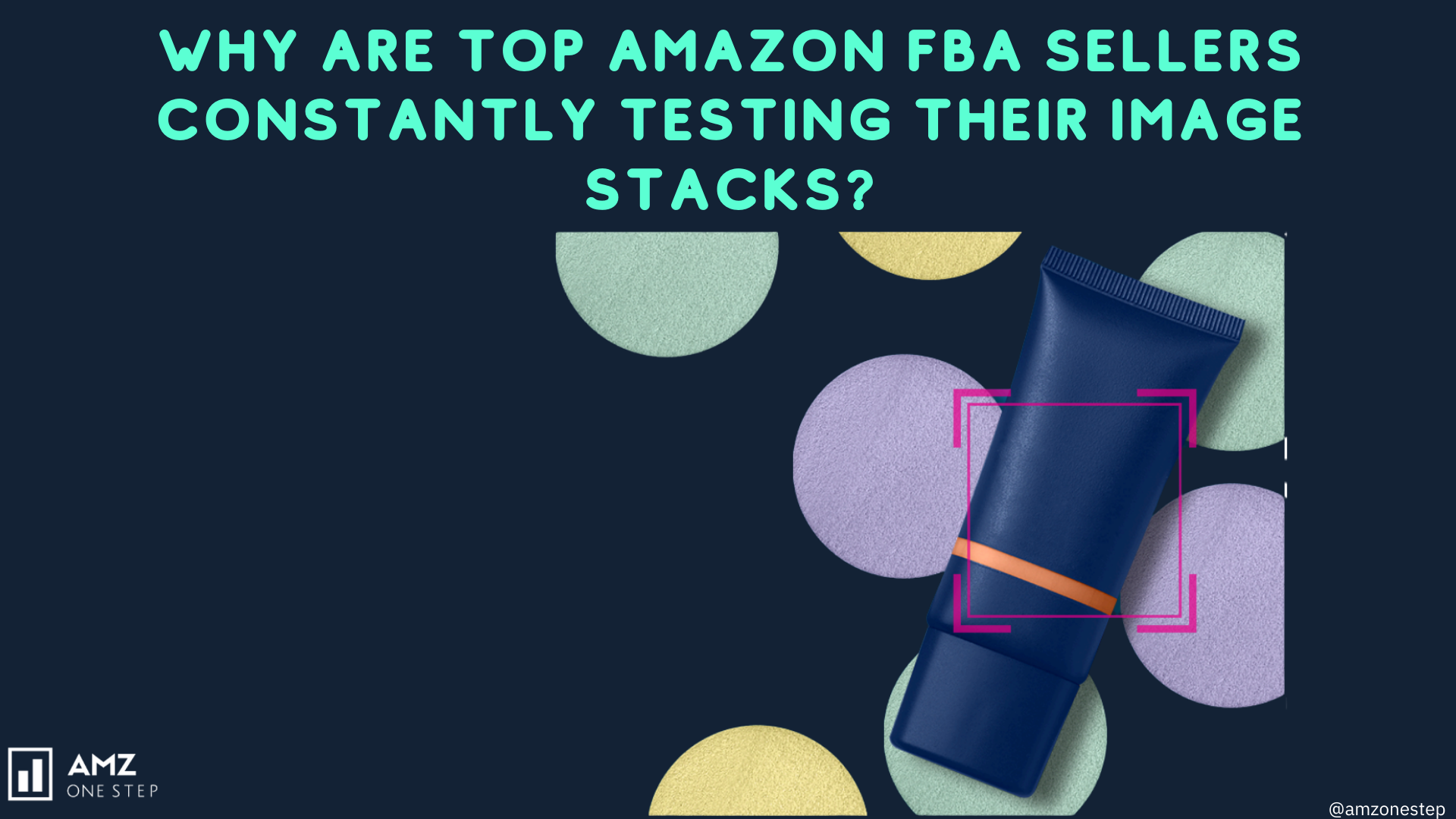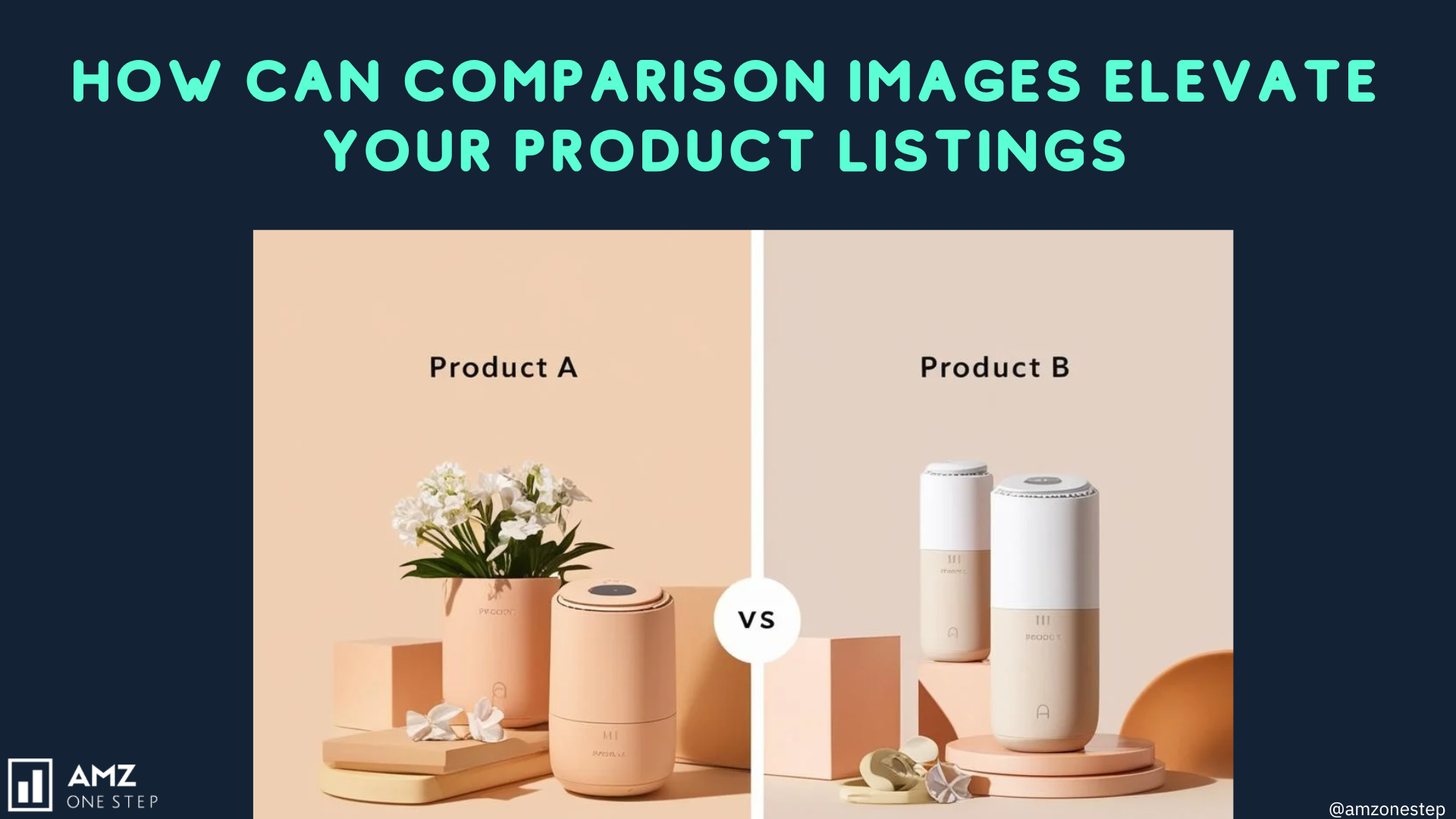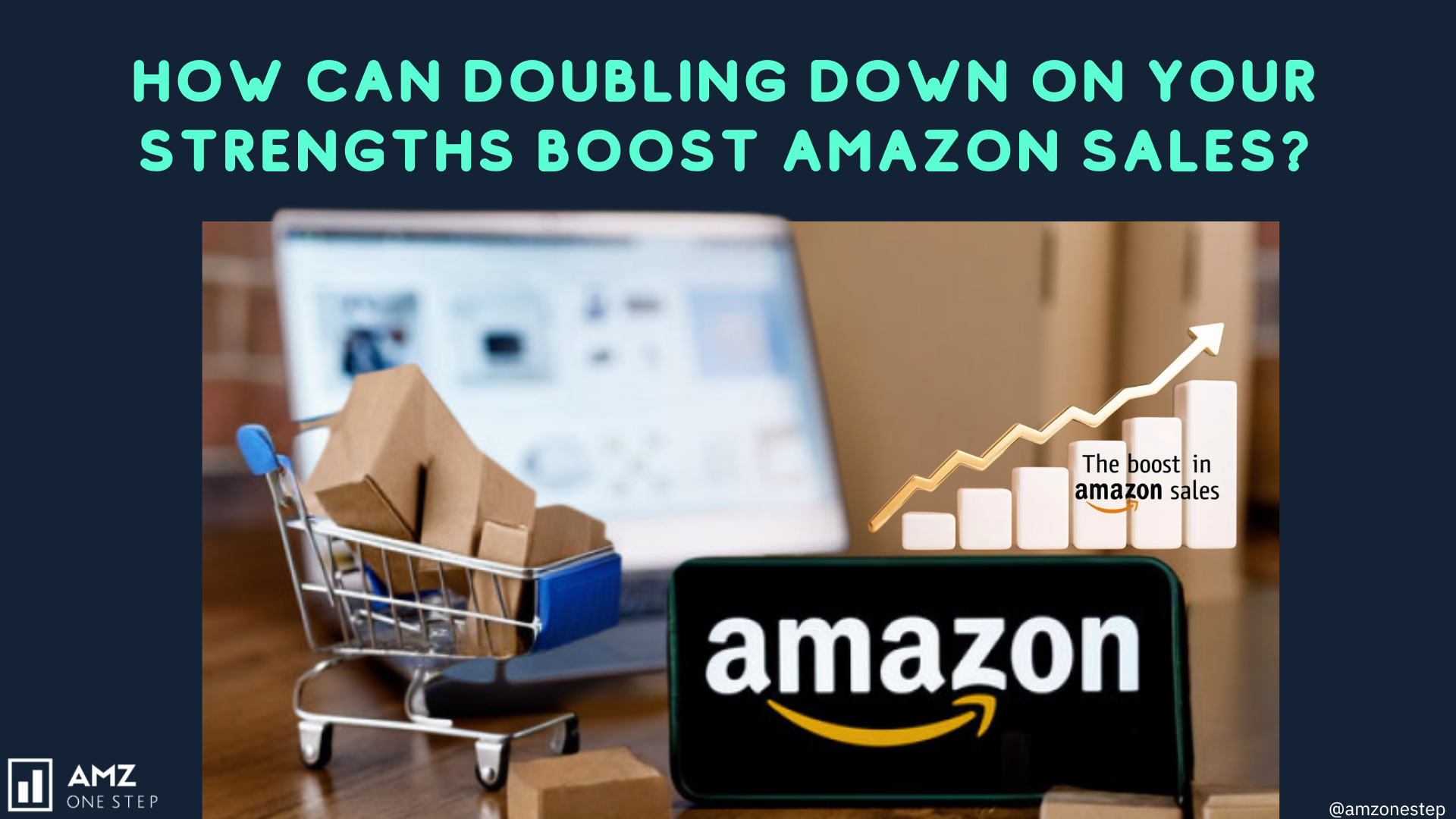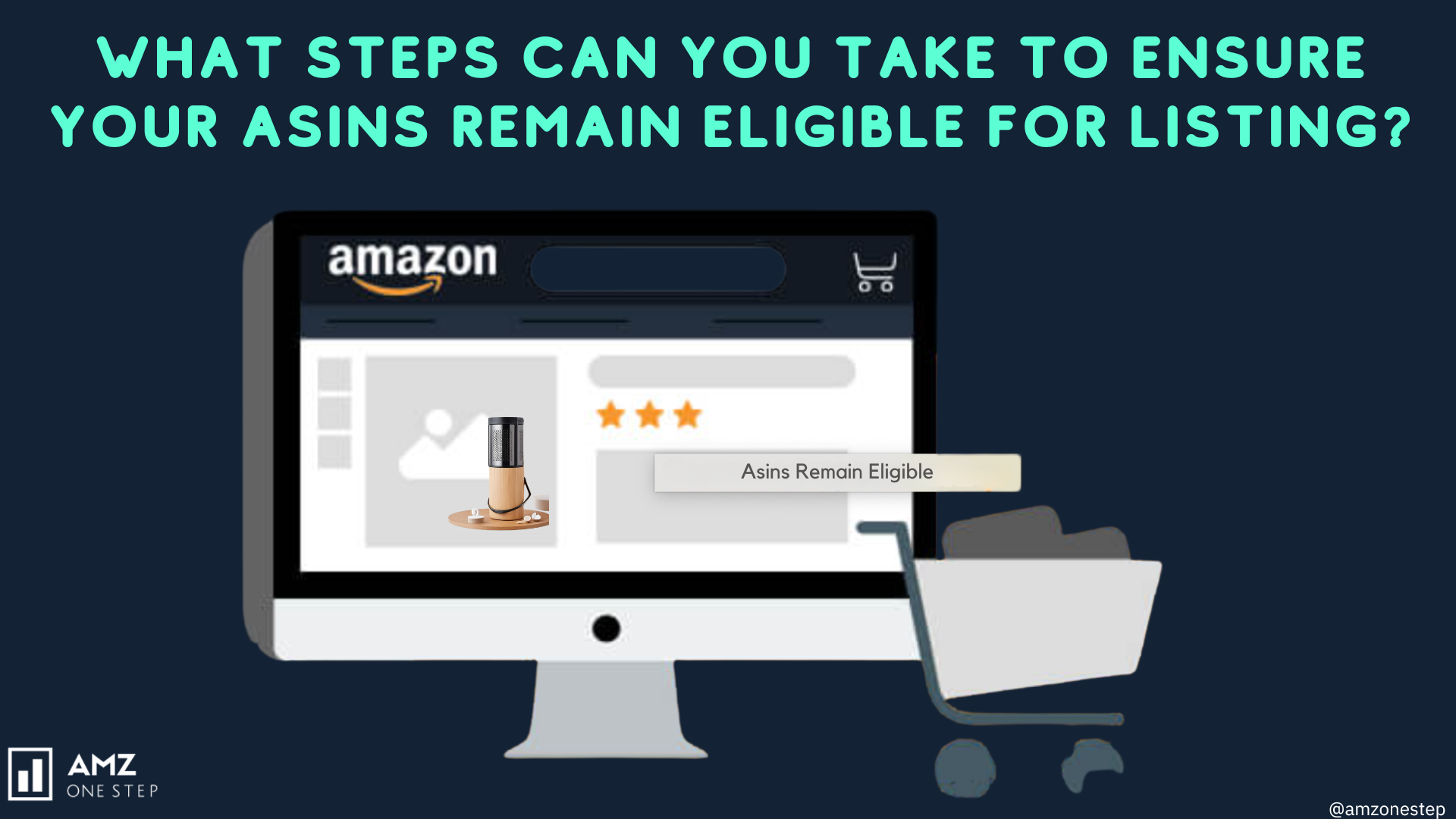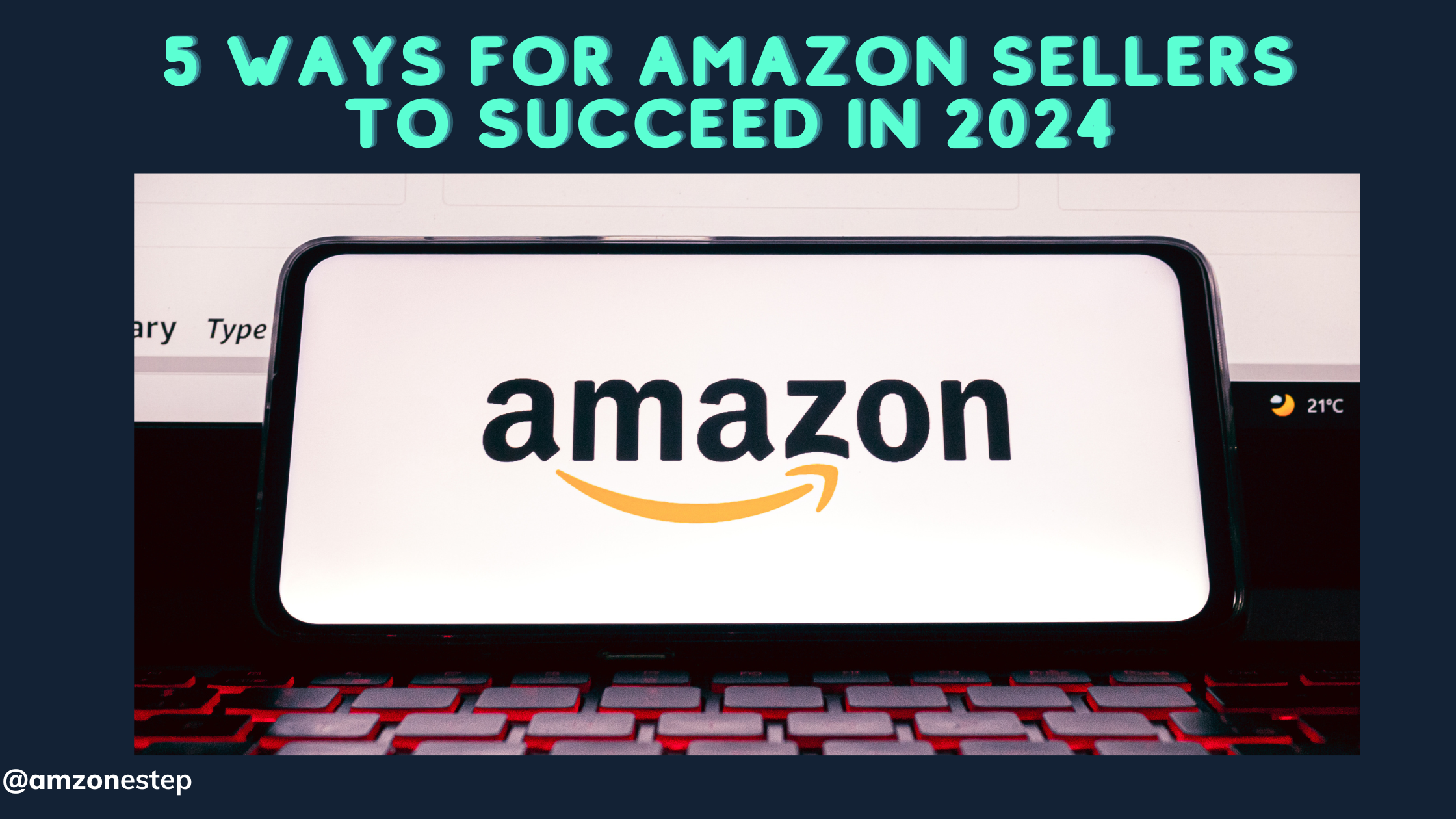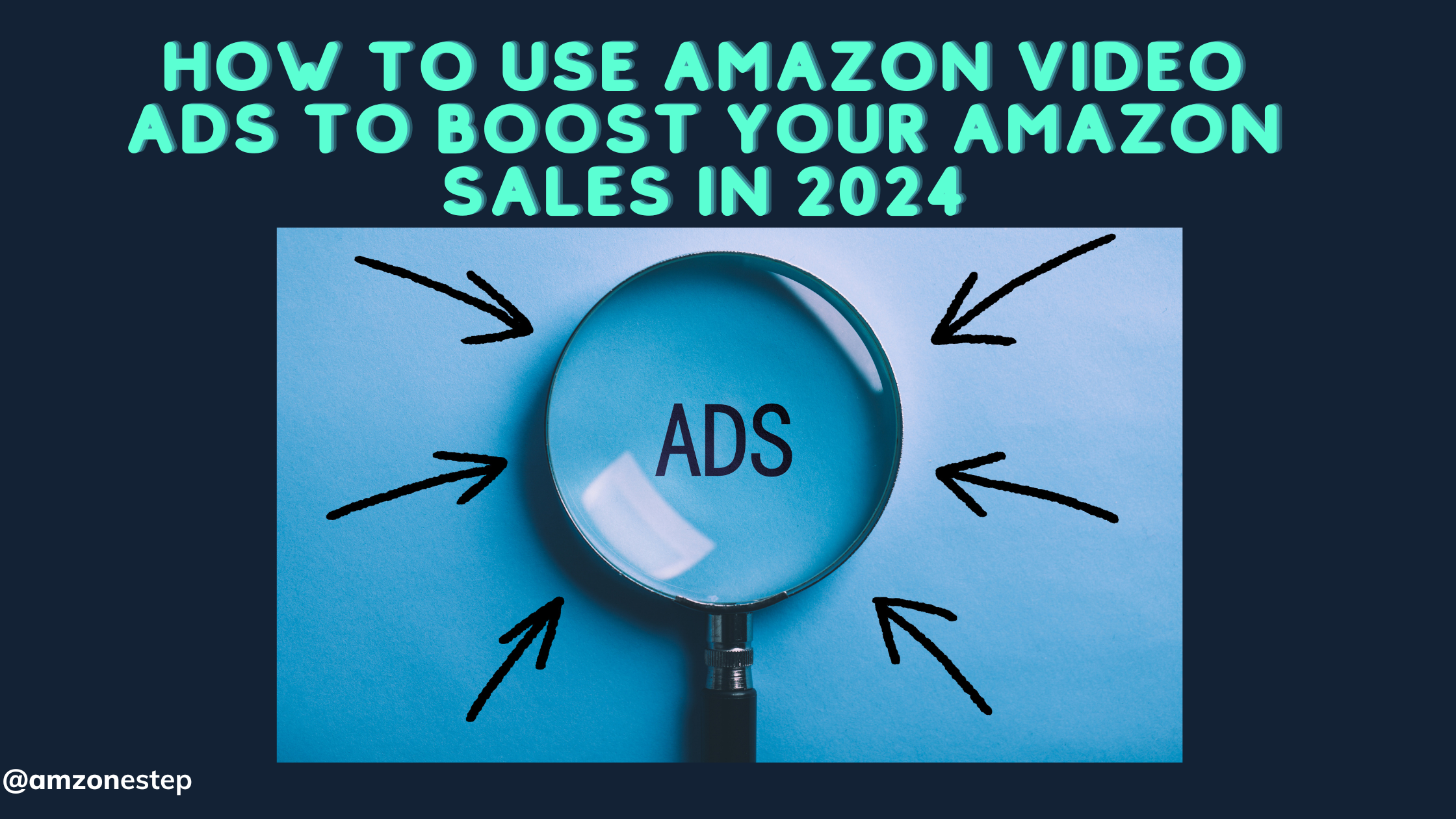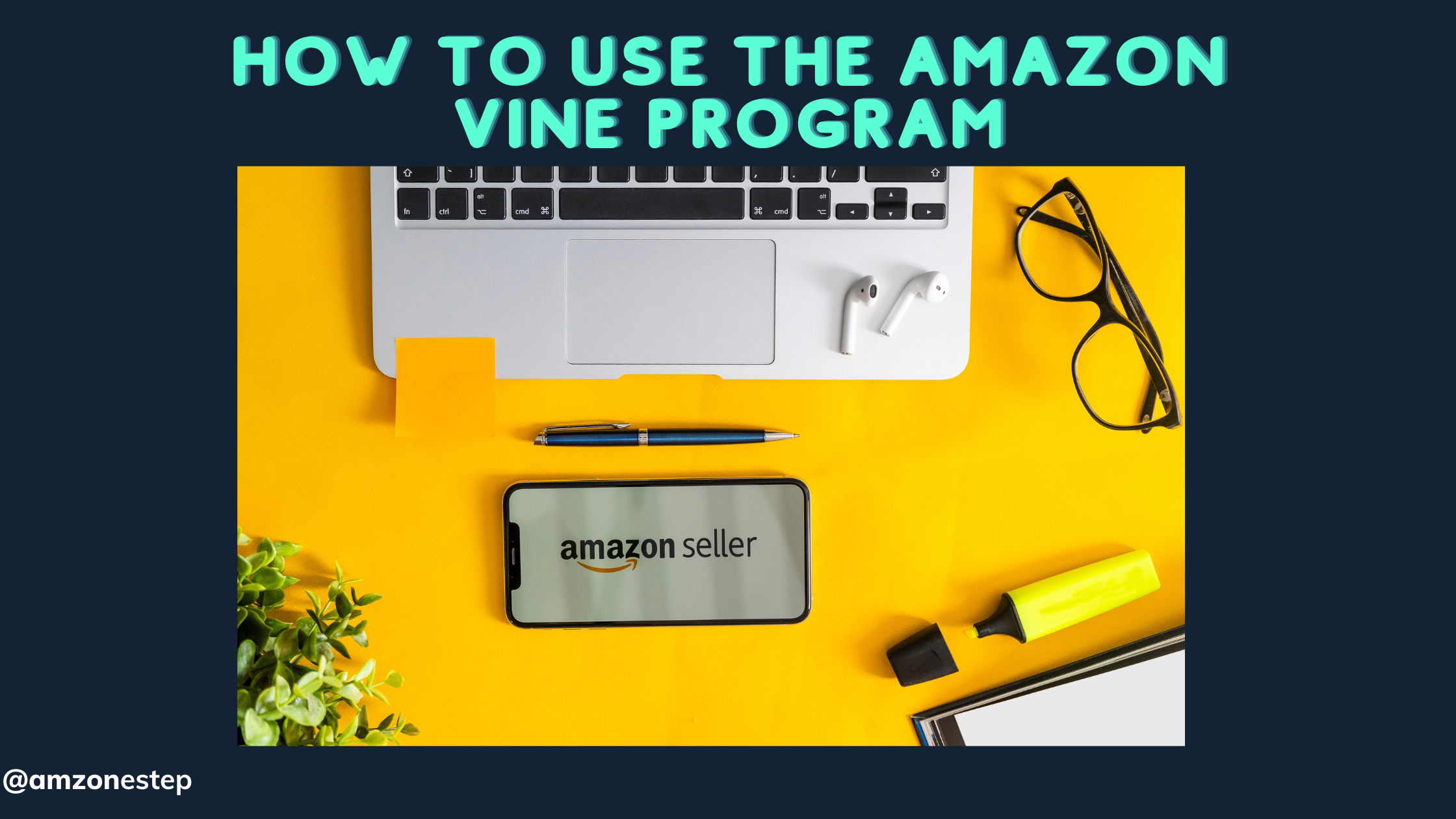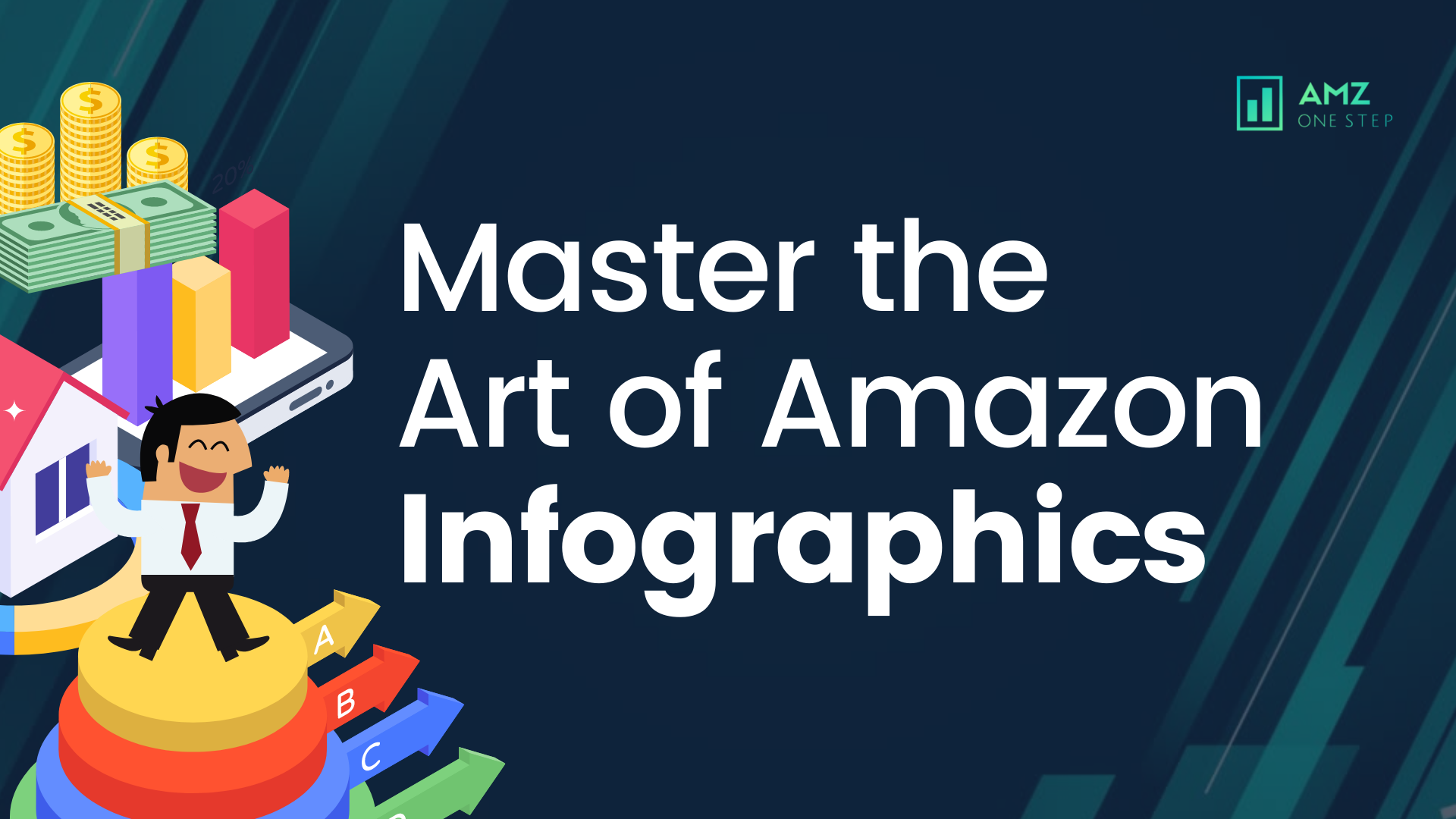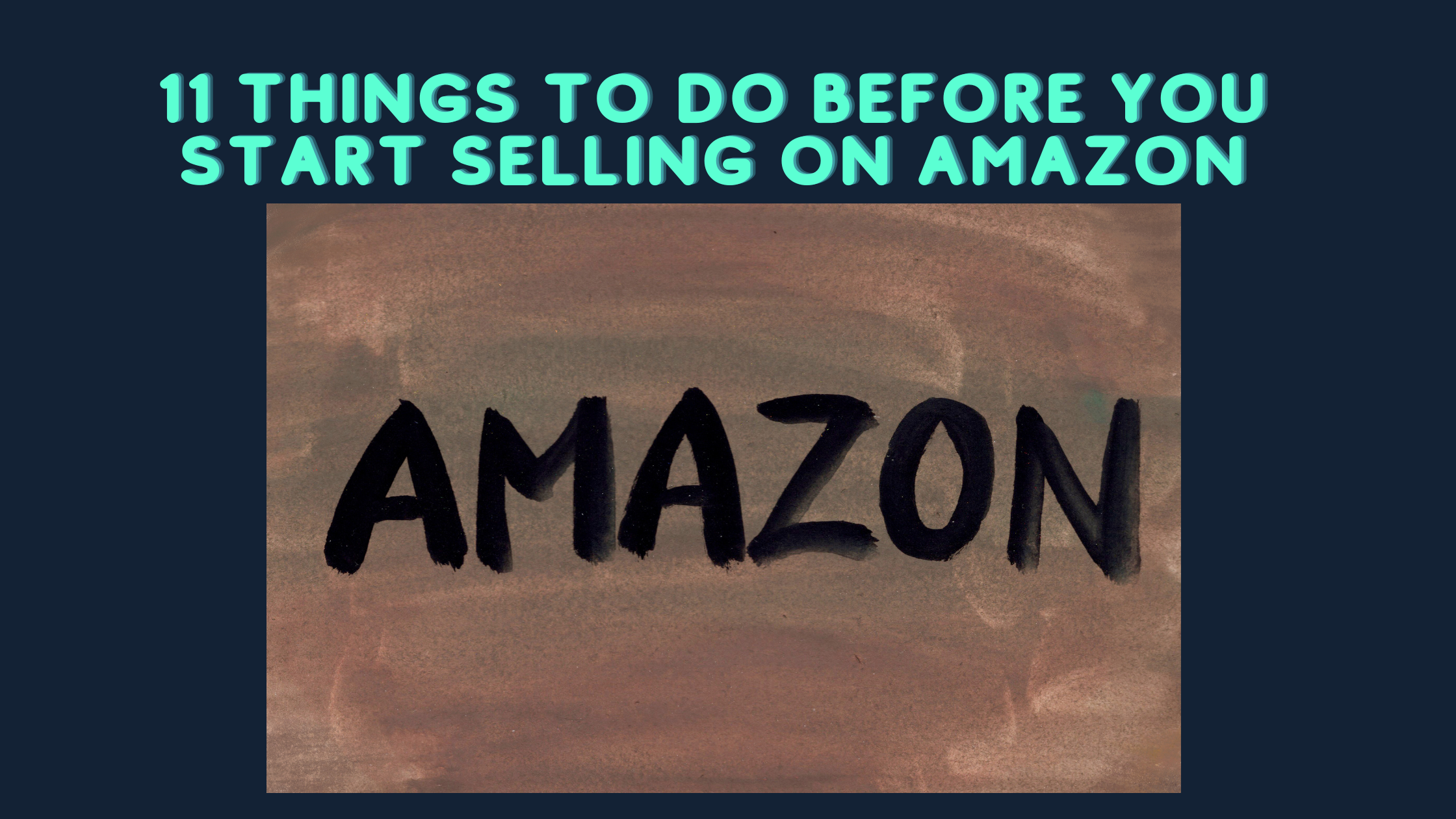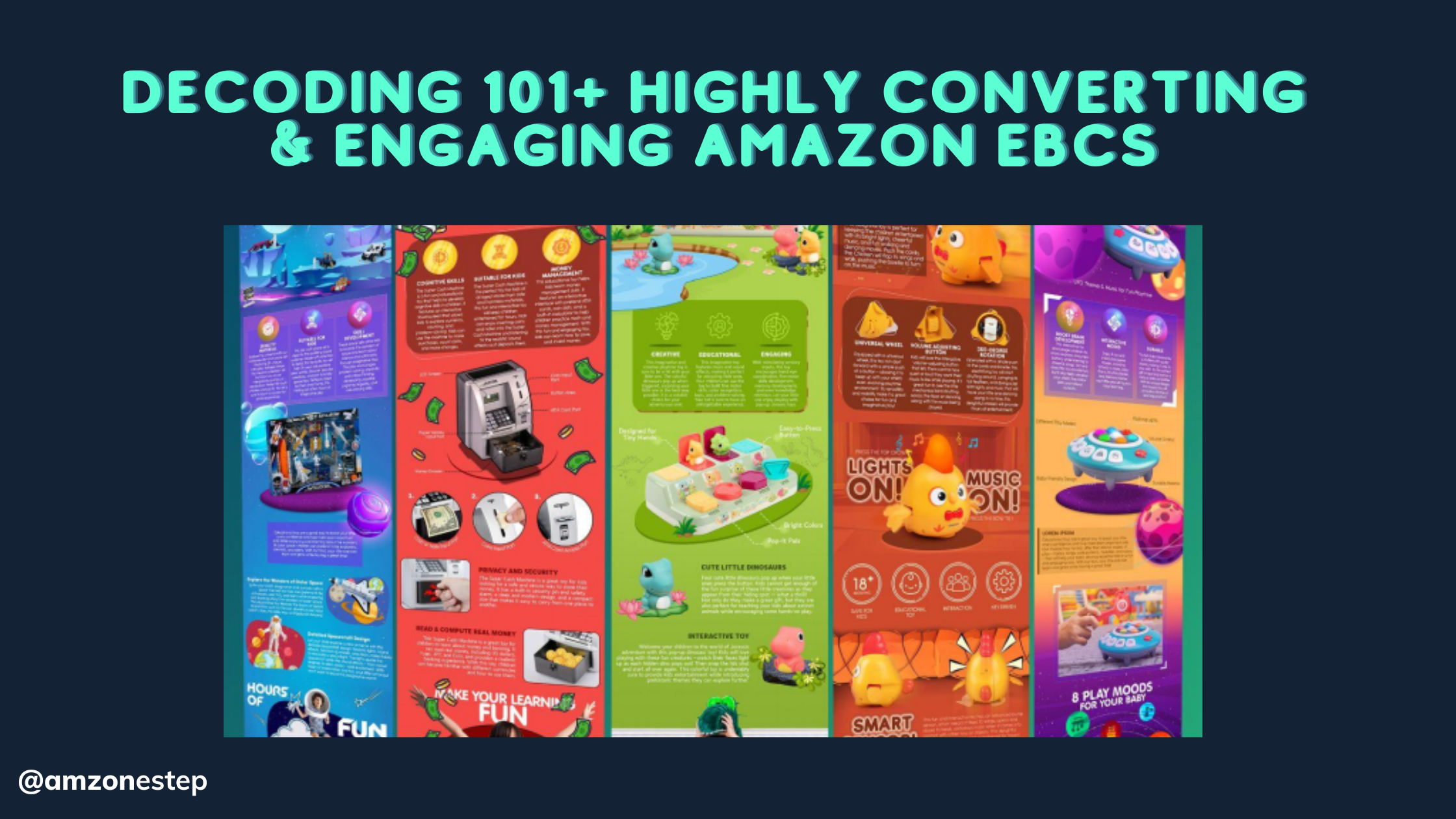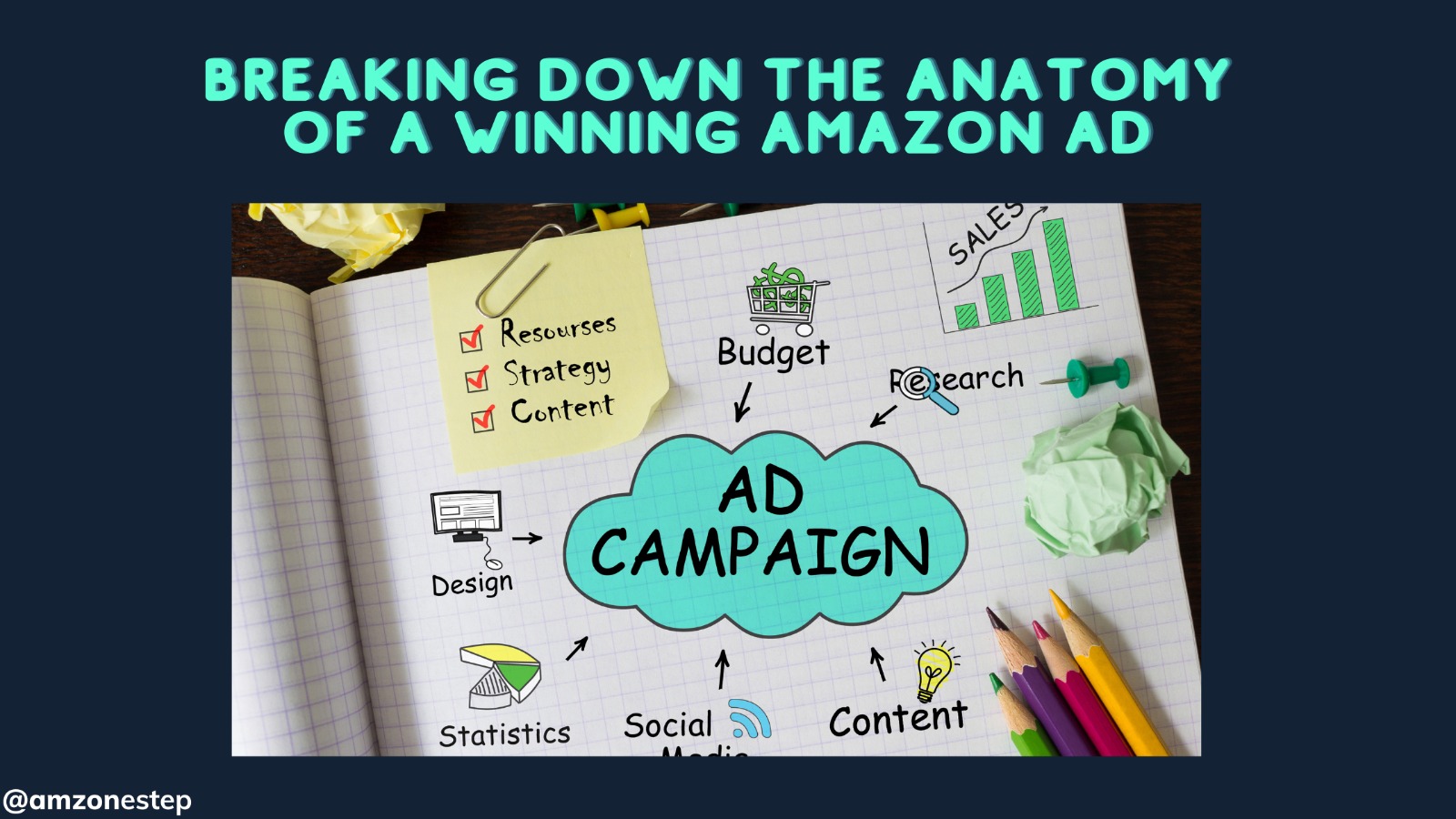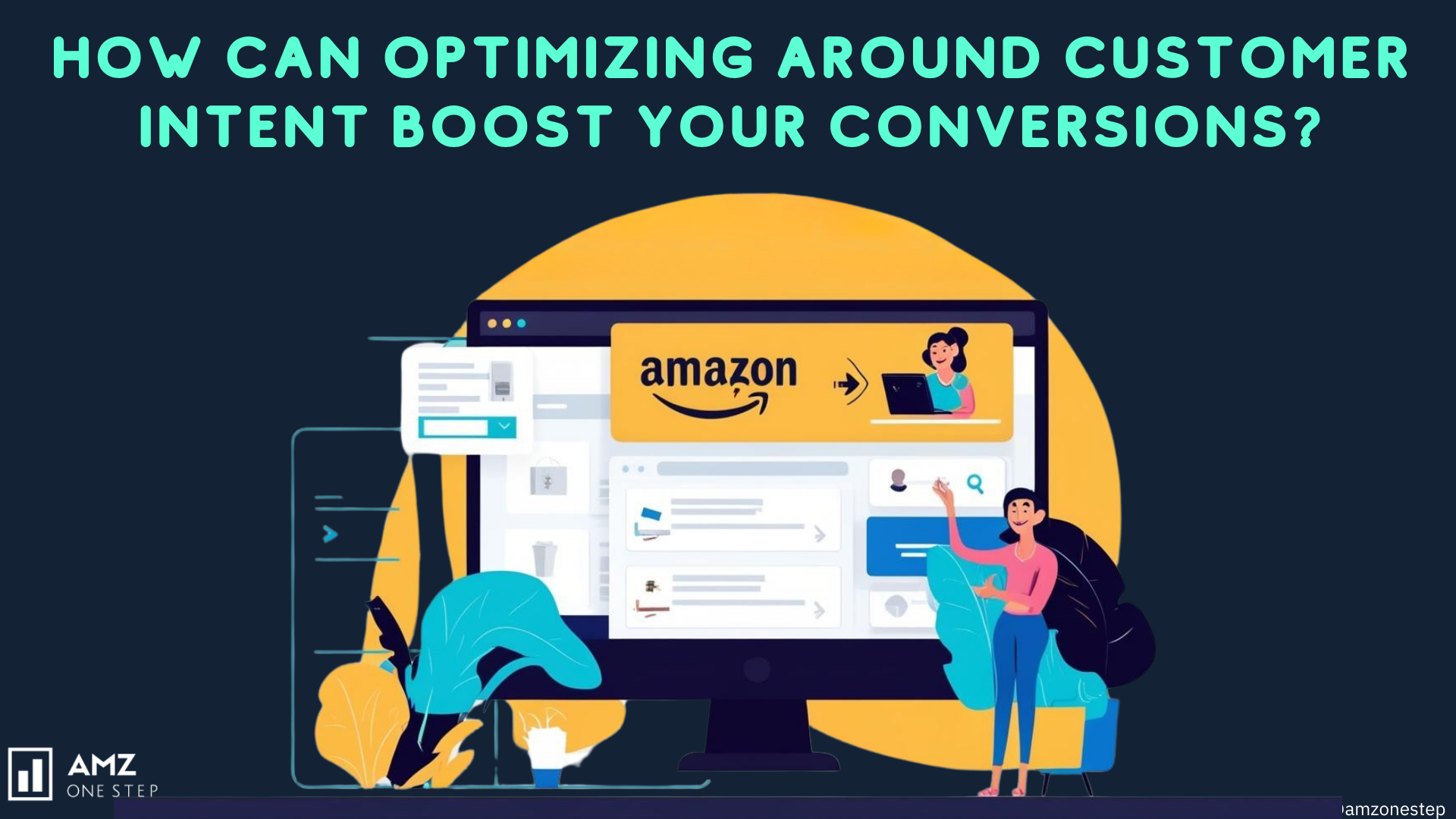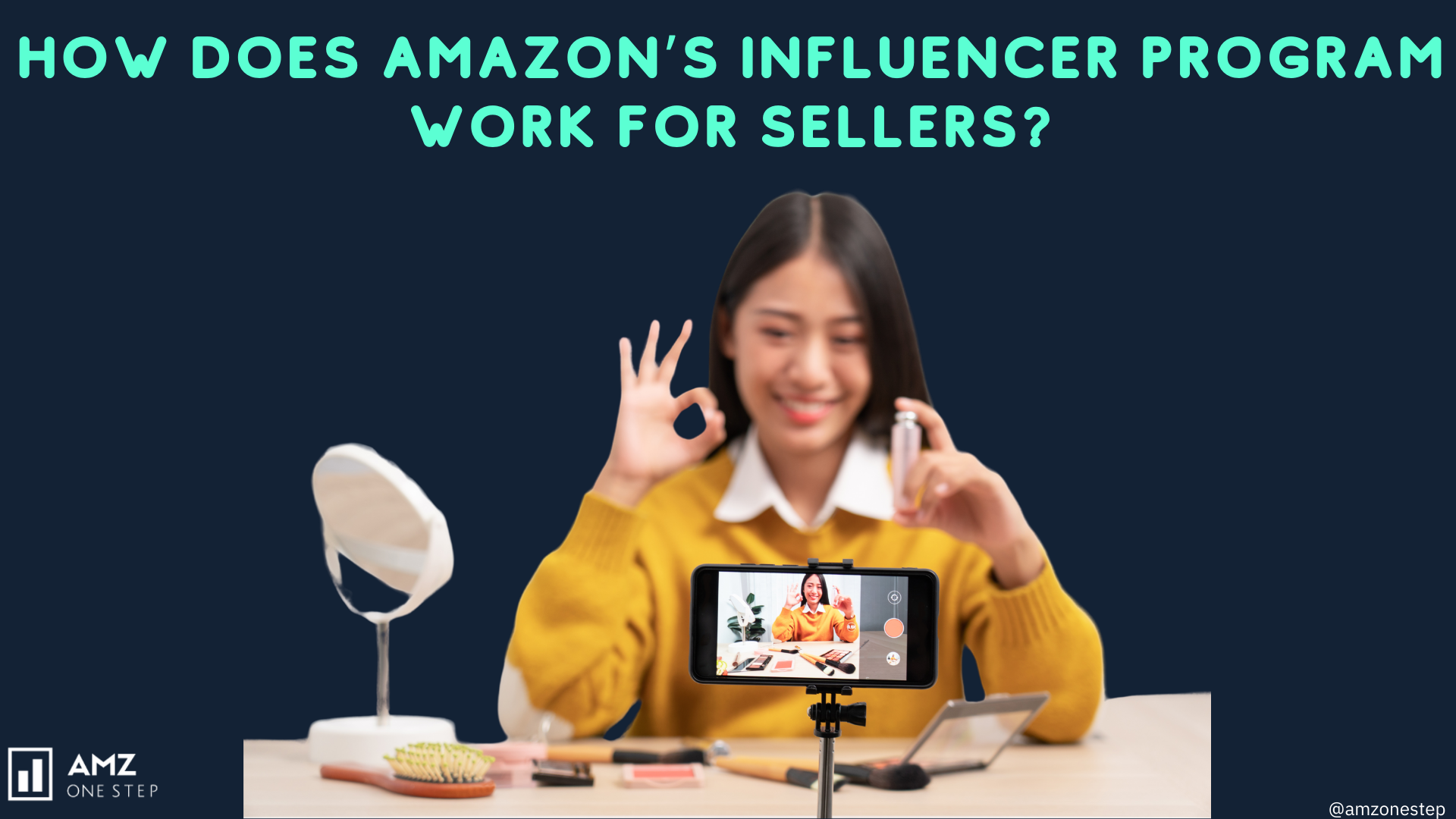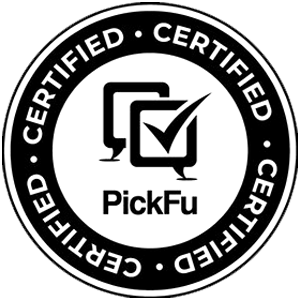Boosting your click-through rate (CTR) on Amazon can make the difference between your product thriving or getting lost in the crowd. With millions of listings, standing out requires more than just great product quality—it demands an optimized, eye-catching presentation.
Amazon FBA sellers need to focus on driving traffic to their listings by making their product offerings irresistibly clickable. From engaging listing images to attention-grabbing titles, every element of your product page plays a role in getting customers to stop scrolling and clicking.
Ready to supercharge your Amazon CTR and transform your listings into conversion machines? Let’s dive into proven strategies that work!
Read More: The Complete Guide To Amazon CTR (Click Through Rate) With Examples
Crafting Engaging Titles That Drive Clicks
You are definitely going to be showing up to a buyer first on Amazon, especially when you are selling. A great title can sometimes make all the difference between getting that buyer’s mouse click versus him or her scrolling past your listing.
As an Amazon shopper who has virtually endless options for nearly every item, it is with a great, well-crafted, and compelling title that you must reach that buyer and push your click-through rate (CTR) that much higher to make the sales.
Read More: From Click to Cart: How to Optimize Your Amazon Product Listings for Sales
Why Titles Matter for Amazon CTR
The importance of an Amazon product title cannot be overstated. In many ways, it’s a melting pot of several elements that explain to customers, on mere perusal, what your product is, why it’s relevant to them, and why they should click to read more.
This optimization does not only contribute positively to SEO in Amazon but also increases the hits as the value and relevance of your product can be easily communicated to customers.
- A title, for example, that correctly uses a combination of keywords, then succinctly yet accurately reports details about the product, and finally makes good use of what can be very descriptive words to entice far more clicks.
On the other hand, a weakly designed title that is too vague, cluttered with irrelevance, or not easy to understand will actually frighten customers away and damage your page rank.
Elements of a Successful Amazon Product Title
An effective Amazon product title balances keyword density with user-friendliness. Although one might be tempted to just cram in as many keywords as possible for the sake of SEO, readability needs to come first.
Keywords are important so that your product shows where the shopper is looking, but those keywords need to be introduced in a way that makes sense to the shopper.
So if you are selling a stainless steel water bottle, you might probably like to include all these features and specifications in the title.
- So your title becomes something like “Stainless Steel Water Bottle BPA-Free Insulated 500ml Double-Walled Eco-Friendly Leak-Proof Reusable Drinking Bottle for Sports, Hiking, and Travel.” It’s probably packing enough keywords but this text is such an overwhelming overload, -.
In this case, a much sharper title would have been: “500ml Insulated Stainless Steel Water Bottle – BPA-Free, Double-Walled & Leak-Proof – Perfect for Sports & Travel.”
Read More: Writing Balanced Product Title, Features Descriptions
While using Descriptive Keywords
Finally, key keywords have to be included that people search for regularly. For example, how would you expect a potential buyer to search for your product? What are the major features for which your buyers would look? Use those terms organically in the title so that you don’t make the title sound forced or unnatural.
- For example, you are selling a set of quality wireless earbuds. Instead of this kind of title “Wireless Bluetooth Earbuds,” you can have “Wireless Bluetooth Earbuds with Noise-Canceling Technology – 24-Hour Battery, Waterproof & Comfortable Fit for Gym & Travel.” This title is not peppered with just any old keywords such as “wireless,” “Bluetooth,” and “noise-canceling,” but rather creates a mental image of the value of the product by using specific selling points like “24-hour battery” and “comfortable fit for gym & travel.”
Read More: How Keywords, Copy, and Visuals Work Together on Amazon
Keyword Avoidance Better Still: Do Not Keyword Stuff
While keywords will also play a role in the role of SEO, it’s equally important to avoid using too many keywords in your title, as it will create too much clutter and the readability of the title is dampened. Keyword stuffing also makes it seem amateurish and confusing to potential customers.
Shoppers want a clear, simple description to be given an idea of what the product is, why they should buy it-not a mess of jumbled key words.
- For example, if the product is a natural organic facial cleanser, the title “Organic Natural Vegan Cruelty-Free Face Wash Facial Cleanser for All Skin Types Hypoallergenic Sensitive Skin” says a lot, but nobody wants to read it. The cleaner version “Organic Facial Cleanser – Vegan, Hypoallergenic & Gentle for All Skin Types” says the same keywords with greater chances of ticking the click.
Finally, one of the most important things for an attractive title is it must focus on product unique selling points (USPs) of your product. What are the points that make your product unique and different from others?
Maybe it is a new feature, wonderful durability or even for some limited time, it offers a discount. The more you attract the attention of potential buyers by focusing on the points that make your product stand apart from others, the better it will be.
For example, if you are selling a smart home security camera, then your title should be relevant to the features that will likely be of interest to the shopper. A title that is “Smart Home Security Camera with Night Vision” may describe the product, but it does not make it stand out from others like it.
- A more compelling headline such as “1080p Smart Home Security Camera with Night Vision – Motion Detection & Two-Way Audio – Works with Alexa & Google Assistant” is particularly useful for the product because it will draw a shopper’s attention to a particular value-adding feature in which, when they are especially searching for such functionalities, they will look for this product.
Read More: Amazon Product Ranking: How To List, Index, and Use Keywords?
Setting the Title to be Clear and Concise
Even though you will want to include everything that a customer would need to know about your product, the title itself should still be short and easily readable. Often, too much information within the title will overwhelm customers and make them less likely to click on your listing.
- A messy title that’s hard to read won’t make shoppers want to find out more about your product. An example of a title for a sale listing for a kitchen blender might be: “High-Powered 1200-Watt Blender with 10-Speed Settings, Stainless Steel Blades, BPA-Free 1.5L Jar, and Ice-Crushing Function for Smoothies, Soups, and Sauces.”
This title contains much information, but it’s rather too long to be truly effective. A shorter, more impactful title might read: “1200W Blender – 10-Speed Settings, Stainless Steel Blades & Ice-Crushing Function – Perfect for Smoothies & Soups.”.
Use Numbers and Specs to Establish Trust
Adding numbers and specs to your headline can help establish trust and clarity. Shoppers love it when product details are immediately clear, and listing specific specs like size, weight, or capacity will give it that pop.
Numbers provide a very tangible viewpoint for potential buyers about what they are getting, so they drive higher Amazon CTRs.
- Durable Camping Tent” could sound like “4-Person Waterproof Camping Tent with Double-Layer Design – Easy Setup & Wind-Resistant.” Here you see where you add in the specifics: “4 person,” “waterproof.” That makes the product more appealing and informative, so it has a good chance of being clicked.
How to Optimize Titles for Mobile Devices
It’s also important to consider how a title looks on a mobile. Much of Amazon’s traffic comes from people using mobile devices, and titles get truncated on smaller screens. So, front-load the most important information in your title so that if the title gets cut off, shoppers still are seeing the key details.
- For example, the title could be written as such as “Ultra-Durable Waterproof Hiking Backpack with Multiple Compartments & Adjustable Straps – 30L Capacity,” which would better start with “30L Waterproof Hiking Backpack – Ultra-Durable with Adjustable Straps & Multiple Compartments.” In that case, even if the title is shortened, the core selling points still remain there.
Optimizing Bullet Points to Grab Attention
The most important use of bullet points when selling on Amazon FBA is to provide the desired information efficiently. Though the headline appeal might be brought in with the product title or listing images, it is the bullet points that actually provide the final details a customer needs to seal the deal in purchasing.
In such a competitive marketplace as Amazon, where thousands of sellers are out there competing for all of the consumer’s attention, solidly crafted bullet points can make your product stand out and increase conversions.
The rub is striking the right balance between informative and interesting. Your bullet points should highlight your product’s most significant advantages but interest your customers enough to make them buy.
Let’s dig deeper into how you can position your bullet points to pique attention and improve overall sales performance.
Read More: How to increase Amazon CTR: Get more clicks on Amazon listings
Why Bullet Points Matter
About Amazon, product descriptions and bullet points have got to be one of the quickest ways to tell the world about the merits of a product. Besides, they are often put on top of your product listing-just below the title and the price-thus, probably among the first things that clickers of your listing see.
Buyers rarely have the time or patience to go through lengthy descriptions. Well-optimized bullet points can thus pass on key information quickly and succinctly.
Also, Amazon prefers listings that have clear, detailed bullet points since they aid in SEO and relevance of the result within search results.
Bullet points afford the ability to answer often asked questions about the product’s functionality, quality, and value, reducing the abandonment of carts or negative reviews depending on unmet expectations.
Organize Your Bullet Points for the Most Effectiveness
If you do not design the structure for your bullet points in a way that will attract customers, then you could as well drive them away. The first and the most important rule when writing bullet points is to make each count.
Do not make it a list of extremely simple facts that the customer would know by the listing images or titles. This is where the bullet points should come in to highlight all the significant features and benefits of the product. Start each of your bullet points with a feature, then support it with a benefit.
- Thus, if you’re selling a pair of wireless headphones, instead of writing “Noise-canceling technology,” you might write “Noise-canceling technology for uninterrupted listening even in noisy environments.” That shows customers why that feature is a good thing and how it actually works to enhance their experience of the product.
A well-rounded bulleted item also frequently includes action verbs that encourage the customer to envision using the product. Words such as “enjoy”, “experience,” or “discover” prompt a buyer to imagine the product in everyday life.
For example, instead of simply “Durable stainless steel frame,” it says “Enjoy a durable stainless steel frame that withstands the rigors of time and heavy use.”
Pay Attention to Key Information
Probably, most common errors while selling involve including too much information in bullet points. For you to really catch the eye, your bullet points should focus on the most important selling points of your product. If you overload the reader with technical details or trivial features, it becomes harder for them to pick out the key reasons why they should purchase your product.
Amazon FBA does allow bullet points up to five in your marketing copy, so select them carefully. Differentiate yourself with the first and most compelling benefit of your product. Use the first bullet point to consistently highlight a unique selling proposition about your product.
Assuming you are selling an eco-friendly water bottle, one bullet point may read: “Eco-Friendly Design: Made from 100% BPA-free materials, perfect for the environmentally conscious consumer.”
Once you have grabbed their attention with your USP, you can go on to reveal secondary features like durability, ease of use, or other specific technical specifications which complete the selling proposition. Remember always, to frame these benefits in the context of how they will benefit the customer.
Focus on Benefits Over Features
Although features are important, what really grabs customers’ attention is the benefits those features provide.
When a customer looks at your product, he or she is not just evaluating what it does; he or she is asking, “How does this product make my life better?” Optimized bullet points should clearly answer that question.
- So, if you were to say “High-Resolution Display,” instead you would say this: “Relish crystal-clear visuals through a high-resolution display, ideal for gaming or streaming your favorite movies.” There, you are telling the shopper what the feature is, but explaining how that feature particularly directly works to benefit the shopper.
For instance, imagine selling a kitchen appliance. “500W motor,” not “500W motor that will just let you power through tough ingredients so you can make meal prep easier and quicker.” Now this way, the customer understands what this feature does for him and maybe how it may change his or her daily routine.
Keep It Concise and Skimmable
Amazon buyers are always in a hurry, so they would probably spend only a few seconds scanning your listing to decide whether to stay or leave that seller and view the competition. Thus, you should make sure that your bullet points are concise and brief enough to be read easily.
Generally, a bullet point should be one to two sentences in length for just enough information needed to update the shopper without intimidating him/her.
- Use less jargon, and not technical terminology peculiar to the industry in which it is used. For instance, a fitness tracker should not say “3-axis accelerometer with 2.4 GHz radio frequency connectivity.” This should be interpreted in words that your customers can identify with: “Track every step taken, and send data wirelessly to the smartphone.”
Lastly, don’t repeat similar words. Every line in each bullet needs to be new so that the reader doesn’t get bored with your listing. If all your points are the same, the customer will lose interest and maybe turn to the next competitor’s listing.
Use Emotion to Connect with Buyers
Appealing to the emotions of your potential customers can be a great way of reaching them and causing them to spend money on your product.
Writing your bullet points can be about saying what fulfills the emotional needs of your customer. Is it convenience, comfort, safety, or excitement? You’ll find a way to weave that into your bullet points.
- For example, in a luxury blanket, the headline could be something like, “Wrap yourself in ultimate comfort and warmth on chilly nights with our plush, oversized blanket—perfect for cozying up with loved ones.” Here you are able to connect at a much more emotional level rather than a non-emotional buying decision.
If you sell a safety product-say, a child lock-appeal to the desire for peace of mind: “Protect your little ones with our simple childproof locks that prevent accidents and safeguard your home.”
You’re tapping into deeper motivations for buying your product, in that case, because you’re describing the emotional benefits you can provide.
Using Limited-Time Offers to Drive More Clicks
The Psychology Behind Limited-Time Offers
There are so many psychological reasons why limited-time offers work. Scarcity plays on the psychology of the customer. A deal will be available only for a little while, and the more scarcity indicates about the product, the more valuable the product appears and the greater the fear of missing out on a great opportunity.
Commonly referred to as FOMO (fear of missing out), that is a pretty powerful motivator for making hasty decisions.
Limited-time offers also create urgency in buyers. If shoppers are aware that a promotion will last only for a short time, they are likely to be quicker in acting, thus saving time that may otherwise be spent comparing other goods or delay making the decision.
Read More: Mastering the Balance of Infographics and Lifestyle Images In 2024
Types of Limited-Time Offers:
There are several types of limited-time offers you can implement to boost clicks and increase conversions on your Amazon listings. Each one can be tailored to fit your specific audience and business model:
Flash Deals
A flash deal is a short time discount that may take hours or at least for one day. Such flash deals are very efficient as they produce the feeling of a hurry that compels customers to act quickly. In fact, flash deals appear at the top of Amazon’s website and have attracted a considerable number of customers.
Exclusives for Prime Members
Prime members are always keenly watching out for exclusives. Giving them targeted time-sensitive deals, you will send more clicks from this large and loyal base.
Daily Deals or Lightning Deals
In this, the products will be available as Lightning Deals for an exact number of hours, and, in addition, there will be a countdown timer set for the deal.
Amazon FBA always ensures to give special attention to such deals on its website, and therefore, it becomes a fine opportunity to draw in some spotlight on your product. Daily Deals, however, go on the entire day and even though it is indeed a deep discount, it will attract and engage users to click on your product.
Coupon Codes with Expiry Dates
Depending on the type of coupons, offering coupons that carry an expiry date can also add to their sense of urgency. Amazon FBA allows sellers to offer digital coupons that customers can “clip” and then redeem during checkout.
A set date for expiry will coax the customer to use the coursions:
Use Timers And Messaging To Create Urgency
An expiration date or time left for a promotion is worth including while marketing a limited-time offer. Countdown timers are frequently used on Lightning Deals by Amazon in its promotion of such offers.
In any case, words such as “Hurry, only X hours left!” or “Limited-time offer ends soon!” can be used in the product title, description, and even listing images to stress urgency.
Indicating how long your offer is available clearly triggers the shopper to decide sooner rather than later, increasing the likelihood that they will click on your product, too.
Use Discounts Wisely
While offering a discount can most certainly drive more clicks, it is shrewdly wise to strategize on how much you discount the product.
A big discount may serve as an attention-grabber but will leave you losing money while selling your products. Try experimenting with different discount levels to determine what best resonates with your audience.
- For example, expensive skincare sales would be just fine with a 20% discount, which won’t hurt the brand value, but household products for everyday usage may need the deepest discounts to attract people’s attention, such as 30% or even more for higher interest.
Highlight Limited Quantities
Besides time limits, limited numbers can also be combined with time-limited offers so that clients have more perceived value and a heightened urgency of buying. Customers are always going to feel the pressure to act since they know only a few units are available at discounted prices before the deal disappears.
The second way to encourage a sense of urgency with Amazon is to let you show how many pieces are still available during a sale.
This will make people click on your listings to buy them before they all run out of course. Phrases like “Only 10 left at this price!” or “Get yours before they’re gone!” can be used to really get your buyers clicking on your listing and buying.
Multi-Channel Promotion of Your Offer

No question, Amazon’s platform will certainly encourage the promotion of your limited-time offer through Lightning Deals. Still, the listing also needs external traffic, which can be achieved by following activities such as email marketing, social media, or even paid advertising campaigns.
For instance, during your flash sale event, you would mail out a newsletter to your subscriber list or push it on Facebook and Instagram ads. This would come off the back of using more channels to reach more people and get them clicking through to your listing.
Optimize Your Product Listings
Optimize completely and ensure that your product listings are done perfectly before running a limited-time offer. A good offer cannot be performed if your listing lacks important information or poor images. Product titles, descriptions, and listing images need to be clear, engaging, and professional.
But your Amazon FBA stock should also be adequate enough to meet the surge in demand that a successful limited-time offer would create. There’s nothing more devastating for a customer than having a stock-out at the time of promotion. This would ultimately mean lost sales.
Performance Monitoring and Analysis
Following a time-limited offer, there should be an analysis of how the offer performed. Therefore, one is expected to track and document the click-through rate, conversion rate, and total sales realized in relation to the campaign period.
This information is useful in determining if the offer worked well and ultimately where to make improvements the next time.
- For example, you would find out that certain types of discounts get more clicks but lower the profit margins and therefore you change the pricing strategy. You may also find out that the click-through rate on using emails to promote the offer is much better than the same in social media adverts.
Real-world Application Example
A great example of how flash sales can help sell more is a home electronics product from an Amazon FBA seller. The seller was doing a seasonal promotion when this flash sale sold his best-selling wireless headphones at 30% off for 12 hours.
The listing images were really impressive, clear bullet points, and excellent customer reviews, but sales were slipping as the competition was picking up.
Running a flash sale, indeed brought about massive crowds; sales for that particular promotion spurt to 200%. That is because the deal is given with a time urgency attached to it, and it forces buyers to grab the offer before it expires.
By giving a discount that lasts only for a very short duration, scarcity builds up-giving the seller the ability to outperform everyone since no other competitor has advertised similar deals.
How to Use Brand Analytics to Boost CTR
Brand Analytics is another tool also provided to sellers that enroll in the Amazon Brand Registry program. It’s the ‘viewfinder’ through which sellers will look at customer search behavior, product performance, competitors and so much more.
This helps you understand how your customer is interacting with your product and where to enhance for maximizing Amazon CTR. Some of the primary features available through Brand Analytics include:
- Search Term Reports: Which search terms send traffic to your products, and which keywords are most popularly searched by Amazon shoppers
- Market Basket Analysis: The set of products purchased together, so you can discover upsell/cross-sell opportunities
- Demographic Reports: A more informative view of the customer base, information on age, gender, income, and location.
- Item Comparison and Alternative Purchase Behaviour Reports: These reports will show you which competing products your customers viewed but then decided not to buy from you.
With this intelligence, you can begin refining your listings to increase your chances of getting more clicks.
Search Term Reports: Tips for Maximizing the Potential of Keywords
Now, Search Term Reports in Brand Analytics reveal the keywords by which customers are finding your product, making it of tantamount importance that you optimize your titles, descriptions, and listing images to follow the most relevant and high-traffic keywords.
- For example, if the product you sell is a wireless Bluetooth speaker, you likely find that words like “portable Bluetooth speaker” or “waterproof speaker” are driving significant volumes in your category. Adding these high-ranking keywords to your title and description will boost your visibility among shoppers searching for those terms.
It also lifts CTR by means of making the most use of keywords in listing images. The better practice would be to make certain that listing images forthrightly flaunts features of top-performing search terms, such as whether or not the speaker is portable or waterproof.
In this way, once the intent of the search aligns with the visibility of the image, clicks are more likely to happen from the shoppers.
Competitor Data Applied Improving Product Titles and Descriptions
Using Amazon’s Item Comparison and Alternate Purchase Behavior Reports, you’ll find the things your customers looked at or purchased after viewing or considering your item. It lets you dig into the competitor listings and see what aspects of your product are lacking in comparison.
For instance, if you have a listing from a competitor with significantly more CTR than yours, take a closer look at the product title, description, and listing images to learn what it is that they might be doing better for their product.
Could it be that your competitor has spotlit the key features or benefits in the title that may not be on your product? Or perhaps the listing images are presenting the product in ways that would enable them to picture the result desired by a potential buyer?
Analyze and try to find out what makes the competitors unique so that you can make some difference for your listing.
Enhance Listing Images with Market Basket Analysis
Brand Analytics offers Market Basket Analysis, which indicates to you what other products other customers tend to buy when they buy something from you.
Use this information to better enhance listing images by pointing out complementary products or accessories, thus encouraging that shopper to click on your listing.
For example, if you have sold trekking backpacks, you would realize that on most occasions, people purchase water bottles or trekking poles with that backpack, so add listing images in which that backpack is used along with that accessory.
This not only better gives the shoppers an idea of how to use your product but also lifts the perceived value of your listing, making it a better listing for the buyers.
Using Demographic Reports for Personalization of Your Listing
The Demographic Reports of Brand Analytics help you to access your target clients’ demographic data, categorized into age, gender, income, and geography. Armed with such data, you will better be able to tailor your listing to appeal more closely to their affinities and tastes.
For example, if your demographic analysis determines that most of your customers are young professionals with more expensive incomes, you can use premium quality or modern design as highlights for your advertisement.
If, however, your target market leans toward price-sensitive buyer segments, using wording that talks about value for money or lower prices would effectively increase CTR.
You can also use this demographic data to improve your listing images. If most of your target viewers are outdoor enthusiasts, present your product against relevant outdoor settings so that they connect it with their interests and lifestyle.
Representing in such a specifically targeted listing will raise the chances of catching the attention of your target audience and, subsequently, its CTR.
Brand Analytics helps you understand customer purchase behavior and when they are in the best mood to offer them promotions or discounts. It establishes limited-time offers that put pressure on a user to click your listing and buy, as a great deal may not be there the next day.
- For example, if Brand Analytics shows that your sales peaking happens during the holiday season, then consider offering a promotion limited to this time. For instance, you can attract clicks from deal-seeking shoppers by using words like “Holiday Special” or “Limited-Time Discount” in the product title and listings.
Monitoring and Adjusting Your Strategy
You should monitor the constant effect of optimization based on Brand Analytics data. Use Brand Analytics in order to track how your listings perform in real time but specifically keep your eyes on your CTR, conversion rates, and sales.
Therefore, if there is a drastic spike in CTR after new keywords have been added or listing images updated, then you know that optimizations are probably helping. But in case it does not show any improvements, then you might need to revisit the strategy and make more adjustments.
The continuous optimization of your listings with performance data ensures that you stay competitive and continue driving traffic into your product listings.
The Power of Including FAQs in Your Listing
Why FAQs Matter in Amazon Listings
Most online buyers will typically have questions about products. Sizing, functionality, or shipping details are some of the typical questions that prospective buyers would want answers to before buying the product.
By including a comprehensive FAQ list ahead of time, it eliminates these questions and answers them, hence reducing the chances of the buyers leaving your listing to find more information. That’s why FAQs are a great addition to your Amazon listings:
- When the answers to the most commonly asked questions are well laid out and succinct, it is easier for a buyer to develop his trust. For example, buyers tend to be more confident in buying when the product is well understood and all their concerns are met way before purchasing time. When a buyer feels fully enlightened on what he or she is looking for, it is very unlikely that they go shopping elsewhere.
- The existence of a robust FAQ section diminishes the total number of support inquiries your team needs to ponder over. Providing answers to all FAQs directly on the product page gets rid of many clarificatory inquiries thereby saving time and resources and improving the overall shopping experience.
- An FAQ page removes barriers in the buying cycle. It explains away objections, which means that it becomes easier for prospects to make that purchase. This is especially true for more expensive items because objections are virtually always buyer-specific before they ever buy.
- FAQs can also increase the optimization of your product on Amazon with regard to search engines. If a buyer is searching for a product that is similar to yours and types relevant questions in a search, the presence of a well-crafted FAQ increases the chances of your listing appearing near the top through those relevant queries.
- Most Amazon sellers do not make the most of a listing’s use for FAQs. By adding a thoughtful and astute FAQ to your product, you will be ahead of other competitors who fail to capitalize on this approach. It advantageously raises the visibility of your item but more importantly, your brand.
Putting Together Powerful FAQs for Your Amazon Listing
Now that we have determined why FAQs are so important for an Amazon listing, let’s talk about how to write an FAQ section in a way that delivers value and drives conversions.
Common Customer Questions
These can be derived from:
- Past customer inquiries
- Product reviews (positive and negative)
- Competitor listings (take a look at their FAQ page or customer reviews)
- Testing of products and user feedback
For example, an Amazon kitchen gadget: Most FAQs will ask such questions as how to clean it, what are the dimensions, or is it safe for the dishwasher? It’s better to answer all these obvious questions so that customers feel informed and ready to buy.
Write simple answers to your FAQs. Generally, avoid using jargon or overly technical language in any FAQs you create because it may confuse some of your buyers and negate the simplicity of your listing.
For example, if the interrogator asks “How long does the battery last?” A straightforward answer like, “The battery lasts up to 8 hours on a full charge,” is much more effective than providing them with a long technical explanation of how it works.
Clarity is the best. Your FAQs should not provide space for misinterpretation and be able to furnish them with enough information to meet the satisfaction of the customer without overdoing it.
Outline Product Features and Benefits
Your FAQ section also offers yet another chance to focus attention on the most important product features and benefits. While answering your customers’ most common questions, you can start weaving in why your product stands out as you respond to their most burning questions.
- So for example, if a customer asks if this product is durable, you might respond with, “Yes, our product is built of high-quality stainless steel and goes on to last years without rusting or warping.”.
This will address the issue of the customer and help build the quality of your product.
Use FAQs in Anticipating Objections
Customers have objections and concerns which prevent them from finishing a sale. It is through your FAQ section that some of these concerns are being eliminated and obstacles taken away from buying.
Then you might add an FAQ such as, “Why is this product more expensive than others?” Your response might highlight the superior quality materials, longer life, or other added conveniences of your product, making the cost less objectionable to buyers.
Keep Current with Consumer Feedback
The FAQs should be dynamic. Based on this, as you go on getting the feedback and questions from the customers, make sure the FAQs are up-to-date at all times.
There might also be new questions that will arise based on how the customer interacts with the product, which can further improve the experience of future buyers by answering them.
For example, if customers start asking if the product works in a particular climate or region it would be important to add that sort of question to your FAQs so you will be able to help answer some of the same concerns for other buyers.
Supercharge your Amazon clicks—start now with AMZ One Steppon before it goes away, making him click on your listing more.
Holiday and Seasonal Promotions
Holiday and seasonal promotions are great times for limited-time offers. From Black Friday on, Cyber Monday, through the holiday season, individuals are more amenable to buying things related to their holiday shopping during these time frames.
By offering special promos during holidays, you capture increased shopping traffic during those times and bring more eyeballs to your listings.
Best Practice Tips for Running a Limited-Time Offer
Smart timing in your limited-time offers is going to be required to really produce the best outcome. Here are some strategies to help you drive more clicks and convert

Hi there! I’m the content marketing and branding specialist for AMZ One Step. I work hard to create engaging and informative content that helps our readers learn more about Amazon selling and how to make the most of their businesses. I love spending time with my family and exploring literary works when I’m not writing or working on projects.

